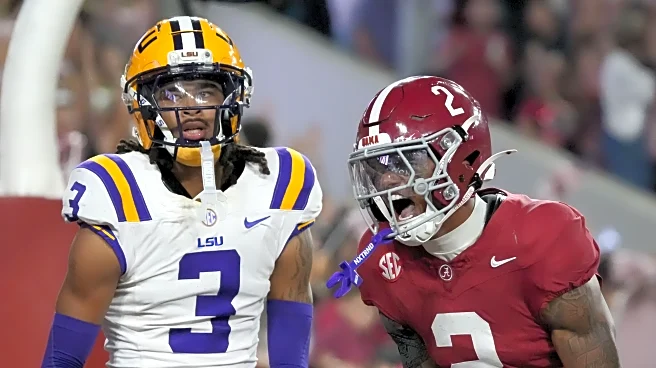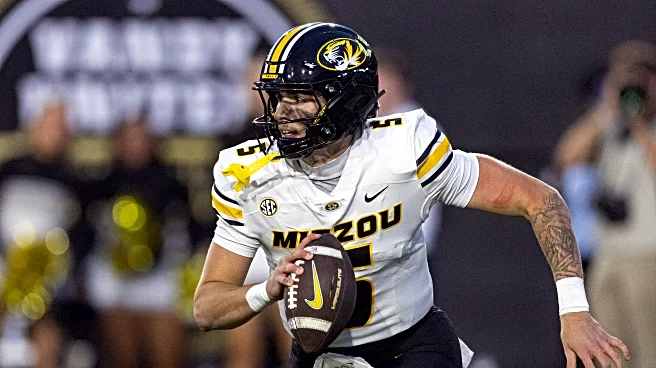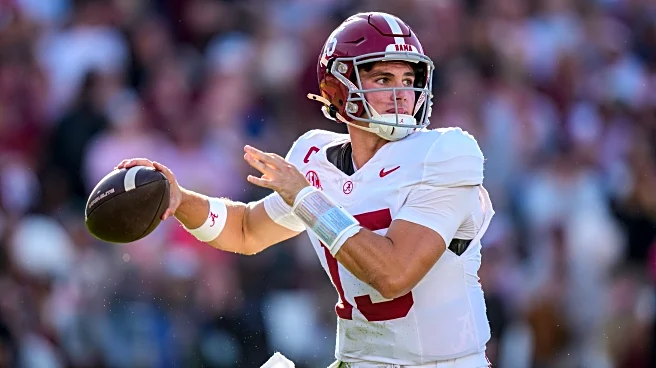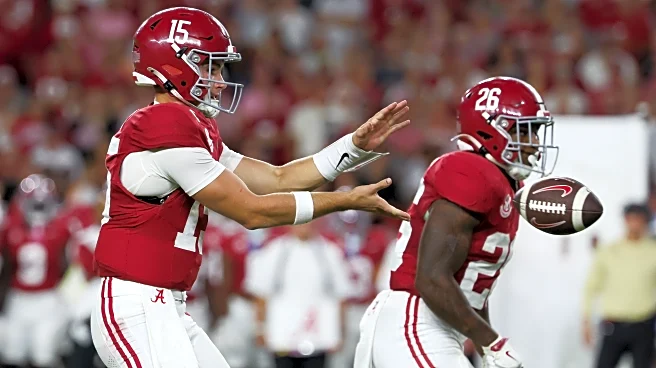What's Happening?
Michael Van Buren, a sophomore transfer from Mississippi State, took over as quarterback for LSU during their game against Alabama on November 8, 2025. Garrett Nussmeier, who was a Heisman Trophy candidate
at the start of the season, was benched by interim coach Frank Wilson in the third quarter after a series of disappointing performances. Van Buren, originally a four-star recruit, transferred to LSU after Blake Shapen returned to Mississippi State. He had previously shown potential by passing for 1,886 yards and scoring 11 touchdowns during his freshman year at Mississippi State. Van Buren's entry into the game marks a significant shift for LSU, which had invested heavily in the transfer portal to support Nussmeier.
Why It's Important?
The decision to bench Garrett Nussmeier and bring in Michael Van Buren could have significant implications for LSU's football program. Nussmeier was expected to lead the team to success, but his recent struggles have prompted a change in strategy. Van Buren's performance could influence LSU's future quarterback decisions and impact their standing in the SEC. This move also highlights the volatility and unpredictability of college football, where player performance and coaching decisions can rapidly alter team dynamics. For LSU, the change could either stabilize their season or further complicate their efforts to compete at a high level.
What's Next?
LSU will likely evaluate Van Buren's performance in the upcoming games to determine if he should remain the starting quarterback. The team's coaching staff, including interim coach Frank Wilson, will need to assess their strategy moving forward, especially with the potential for Van Buren to become a key player. Additionally, LSU's management may consider further adjustments in their roster and coaching staff to address the challenges faced this season. The outcome of these decisions will be crucial for LSU's prospects in the SEC and their overall reputation in college football.
Beyond the Headlines
The shift in quarterback positions at LSU underscores broader trends in college sports, such as the increasing reliance on transfer portals to build competitive teams. This strategy reflects the changing landscape of college athletics, where player mobility and recruitment strategies are evolving rapidly. The situation also raises questions about the pressures faced by young athletes and the expectations placed on them by institutions and fans. As college football continues to adapt to these dynamics, the experiences of players like Van Buren and Nussmeier will be pivotal in shaping future policies and practices.













